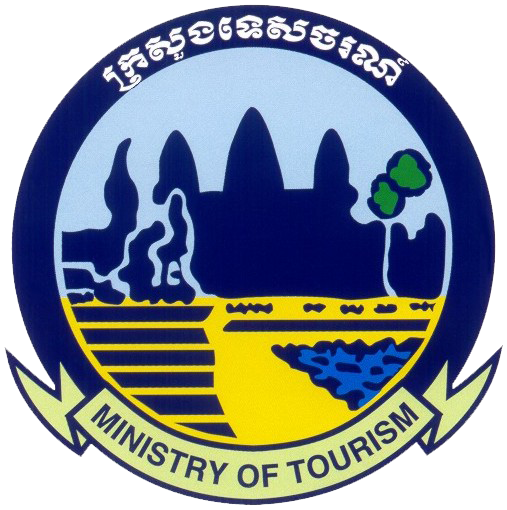Preah Vihear Temple (Khmer: ប្រាសាទព្រះវិហារ Prasat Preah Vihear) is an ancient Hindu temple built during the period of the Khmer Empire, that is situated atop a 525-metre (1,722 ft) cliff in the Dângrêk Mountains, in the Preah Vihear province, Cambodia. In 1962, following a lengthy dispute between Cambodia and Thailand over ownership, the International Court of Justice (ICJ) in The Hague ruled that the temple is in Cambodia.
Affording a view for many kilometers across a plain, Prasat Preah Vihear has the most spectacular setting of all the temples built during the six-century-long Khmer Empire. As a key edifice of the empire’s spiritual life, it was supported and modified by successive kings and so bears elements of several architectural styles. Preah Vihear is unusual among Khmer temples in being constructed along a long north–south axis, rather than having the conventional rectangular plan with orientation toward the east. The temple gives its name to Cambodia’s Preah Vihear province, in which it is now located, as well as the Khao Phra Wihan National Park which borders it in Thailand’s Sisaket province, though it is no longer accessible from Thailand. On 7 July, 2008, Preah Vihear was listed as a UNESCO World Heritage Site.

Location
The temple was built at the top of Poy Tadi, a steep cliff in the Dângrêk Mountain range which is the natural border between Cambodia and Thailand. The Temple is currently listed by Cambodia as being in Svay Chrum Village, Kan Tout Commune, in Choam Khsant District of Preah Vihear Province of northern Cambodia. The temple is 140 km from Angkor Wat and 418 km from Phnom Penh.
The Temple was listed by Thailand as being in Bhumsrol village of Bueng Malu sub-district (now merged with Sao Thong Chai sub-district), in Kantharalak district of the Sisaket Province of eastern Thailand. It is 110 km from the Mueang Sisaket District, the center of Sisaket Province. In 1962 the ICJ ruled that only the temple building belonged to Cambodia, while the direct way to access the temple was from Thailand, but currently, as of at least 2015, the only access is from inside Cambodia.
The Site
The temple complex runs 800 m (2,600 ft) along a north–south axis facing the plains to the north, from which it is now cut off by the international border. It consists essentially of a causeway and steps rising up the hill towards the sanctuary, which sits on the clifftop at the southern end of the complex (120 m or 390 ft above the northern end of the complex, 525 m or 1,722 ft above the Cambodian plain and 625 m or 2,051 ft above sea level). Although this structure is very different from the temple mountains found at Angkor, it serves the same purpose as a stylised representation of Mount Meru, the home of the gods. The approach to the sanctuary is punctuated by five gopuras (these are conventionally numbered from the sanctuary outwards, so gopura five is the first to be reached by visitors). Each of the gopuras before the courtyards is reached by a set of steps, and so marks a change in height which increases their impact. The gopuras also block a visitor’s view of the next part of the temple until they pass through the gateway, making it impossible to see the complex as a whole from any one point. The fifth gopura, in the Koh Ker style, retains traces of the red paint with which it was once decorated, although the tiled roof has now disappeared. The fourth gopura is later, from the Khleang/Baphuon periods, and has on its southern outer pediment, “one of the masterpieces of Preah Vihear” (Freeman, p. 162) : a depiction of the Churning of the Sea of Milk. The third is the largest, and is also flanked by two halls. The sanctuary is reached via two successive courtyards, in the outer of which are two libraries.

